It’s a great time to be a handgunner, and even more so if you’re a 1911 aficionado. For more than a century, John Moses Browning’s masterpiece of engineering has benefited from not only incremental design refinements, but also a number of metallurgical and manufacturing improvements. These have made the modern 1911 pistol more accurate and more capable than even its inventor would likely have thought possible.
As the old infomercial refrain went, “But wait — there’s more.” What if I told you those same incremental changes resulted in one gunmaker developing a 1911 handgun that generates about 15 to 25% less perceived recoil in my experience than a 1911 of Browning’s original specifications? And as a follow-up question, would you be at all surprised if I told you that Springfield Armory makes it?
Heavy-Hitter: Springfield Armory 1911 TRP Operator
You might raise an eyebrow at this, so allow me to head off some possible questions: it isn’t due to some crazy recoil spring system you’re not familiar with, nor is it due to some new and proprietary compensator. And no, it isn’t due to black magic or some other kind of wizard spell that was cast on the pistol to make it shoot softer.
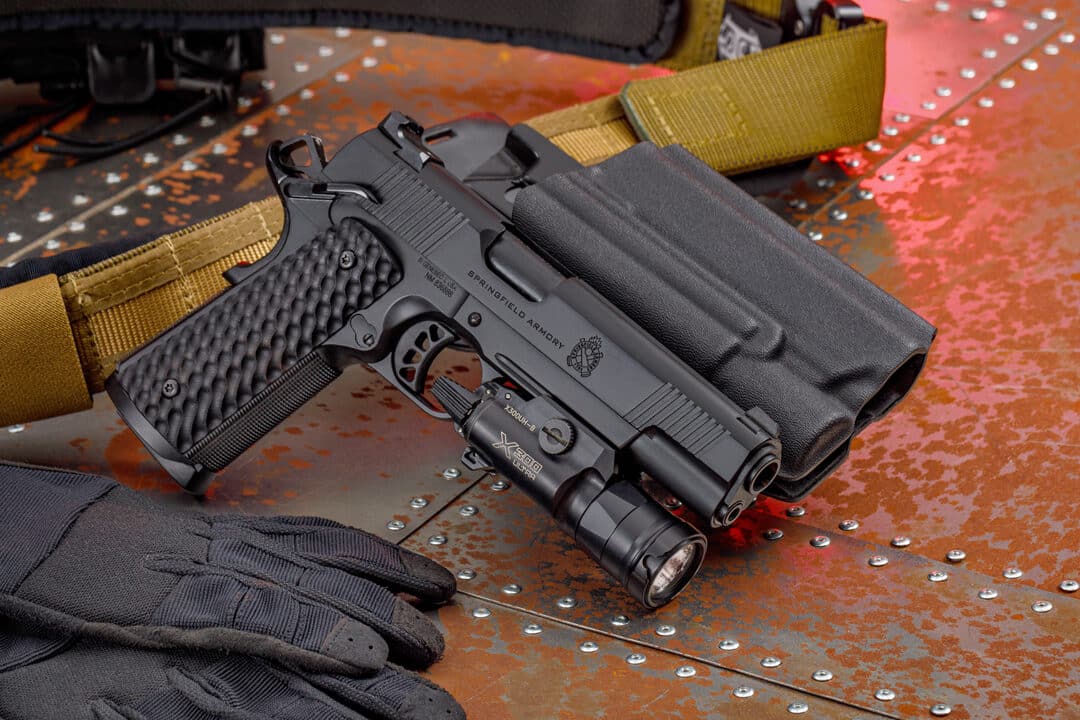
The gun I’m referring to is Springfield Armory’s full-railed, bull-barreled — and California Compliant — TRP Operator. The reason it shoots so softly compared to just about every other 1911 under the sun — and indeed, virtually all other .45 ACP-caliber pistols — is because it’s heavier.
Physics of Shooting and Newton’s Laws of Motion
Let’s take a trip back to our high school physics class. When Isaac Newton laid down the law (literally) in the 17th century, one of his biggest revelations was that force equals mass times acceleration. Put in layman’s terms, when the explosive force of any round is held as a constant, a gun with more mass will accelerate less vigorously into the palm of your hand.
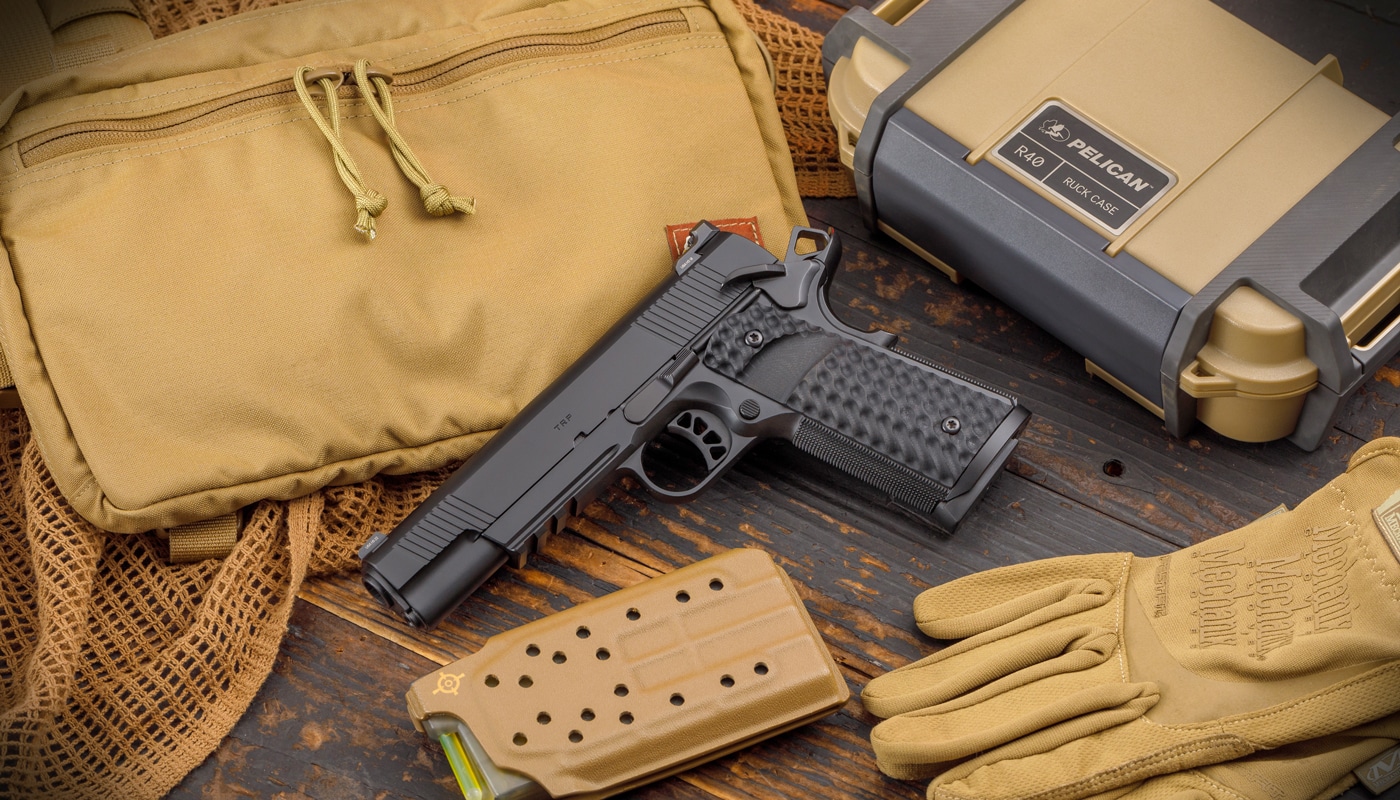
Granted, the “real steel” feel of a 1911 is already comforting and confidence-inspiring. However, the full-railed TRP Operator takes this a step further. Clocking in at about 45 ounces unloaded, not counting the additional mass provided by a fully loaded mag and a quality weaponlight, the TRP soaks up recoil and practically begs for a follow-up shot.
There are a few reasons for this, which are evident upon disassembly. First, the frame of the full rail TRP has a few extra inches of steel over most traditional 1911s. Second, take a gander at that bull barrel. Compared to the barrel on my Springfield Mil-Spec, the TRP’s barrel is appreciably thicker at the muzzle. One will also notice the slide has a bit more metal, and the magazine well adds a little more as well.
And this benefit can carry over to a thoroughly featured all-steel 1911 as well — such as any of the other full-size TRP pistols. While we seemingly live in an era of polymer-framed pistol dominance, there can be something to be said for a hefty, all-steel pistol.
Mass Where It Counts
Though the novice shooter might not think it at first, that extra heft can indeed be the secret sauce to top-tier shooting. In my experience, hot +P defensive ammo through my TRP feels about like 230-gr. hardball loaded to normal specs; in turn, 230-gr. factory ammo out of this pistol tends to feel about like a warm 9mm. And let me tell you this — in more than 20 years of taking shooting seriously, I’ve found one constant: additional recoil is almost never a good thing. The more it can be reduced, the better.
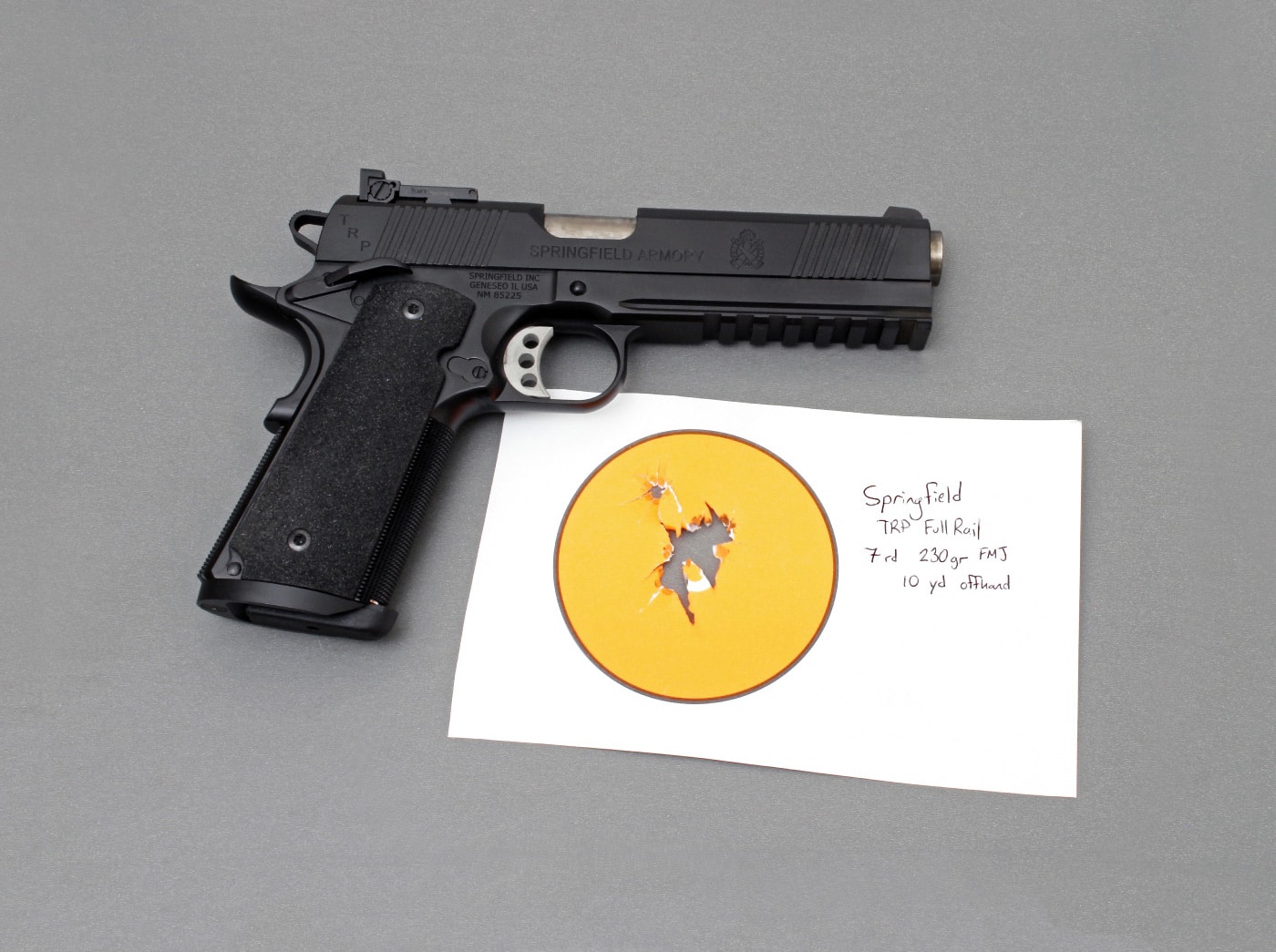
On one hand, slashing recoil improves speed: The softer the gun kicks, the easier the platform gets back on target. On the other hand, psychology comes into play: when recoil is minimal, the less our lizard brains want to wrest control of the gun and muscle it into compliance. Phrased another way, there’s less temptation to mash, flinch or negatively anticipate recoil.
In practice, that extra weight indeed pays dividends on both fronts. I found that with my TRP, I tend to shoot faster and more accurately than I do with any other 1911. I was often downright surprised by how quickly the gun came back onto target, as well as how comfortable I became pursuing faster split times and double-taps in my shooting simply by virtue of a compliant platform.
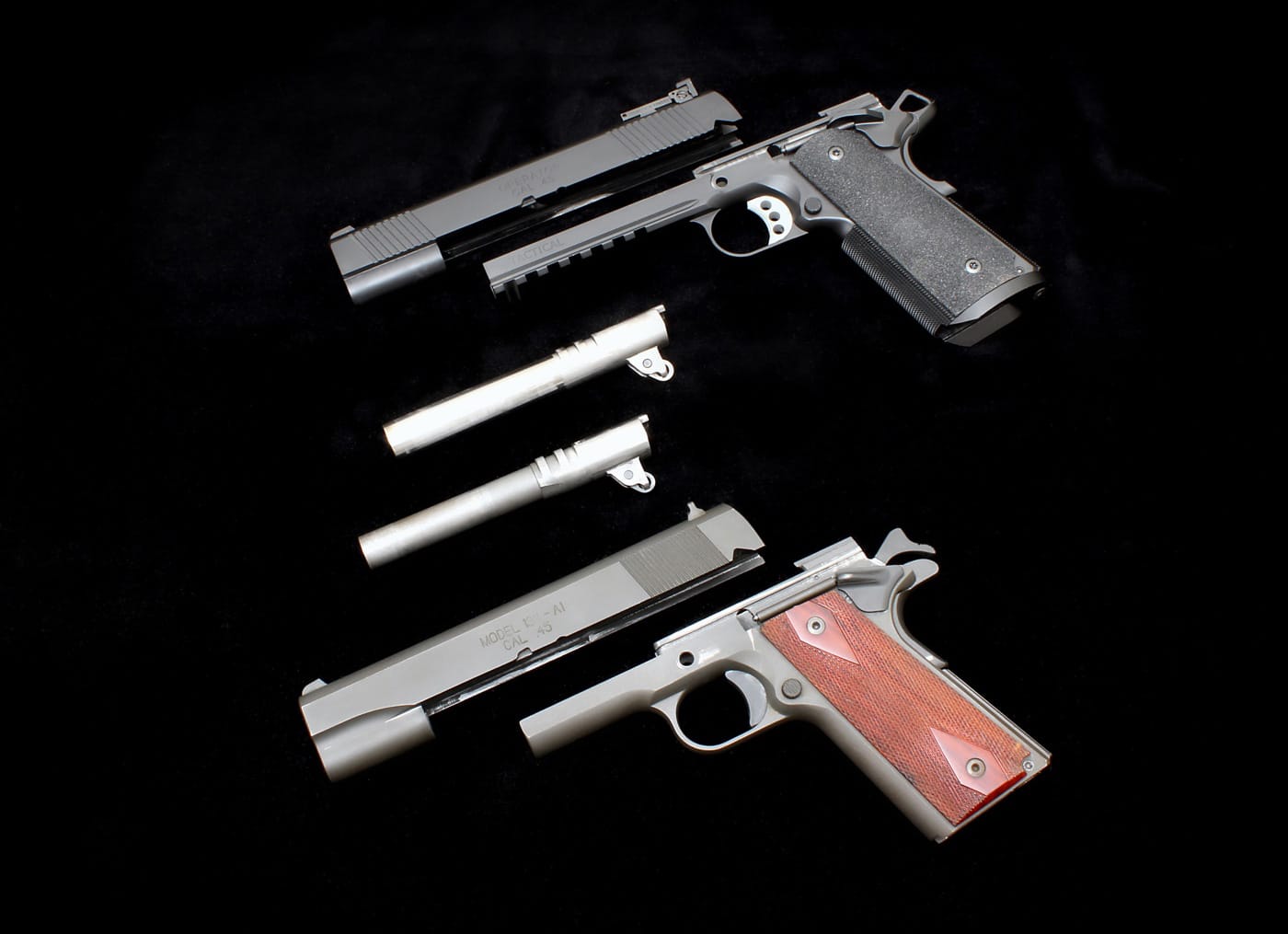
Looking at things critically, the full-rail TRP also helped me to create a positive feedback loop. I expected the gun to be kittenish when it came to recoil, which gave me more ability to visualize and execute a center-punched hit. I’ve been shooting long enough to appreciate anything that gets me out of my own head, and I think an expert pistolero will be surprised by just how much a gun like this seems to automate a lot of the process of good handgun shooting.
All the Upgrades
Certainly, the full rail TRP Operator (as well as any of its siblings in the TRP lineup) is a “feature-rich” 1911: the firearm has outstanding slide-to-frame fit, tritium “night sights” out of the box, faultless reliability, and perhaps the best checkering of any production gun extant.
None of those features are why I bought it, though. I slapped down earnest money for the gun because the unloaded, full-rail TRP is nearly 45 ounces of heavy metal, and that additional weight has made a more pronounced difference in my 1911 shooting than I originally anticipated. And again, a lot of these benefits can be found in any of the other all-steel, full-featured, full-size 1911 pistols in the Springfield Armory line like some of the new TRPs.
“Less is more” be damned. In this case, I argue more is better when it comes to a “heavy” pistol.
Editor’s Note: Please be sure to check out The Armory Life Forum, where you can comment about our daily articles, as well as just talk guns and gear. Click the “Go To Forum Thread” link below to jump in and discuss this article and much more!
Read the full article here




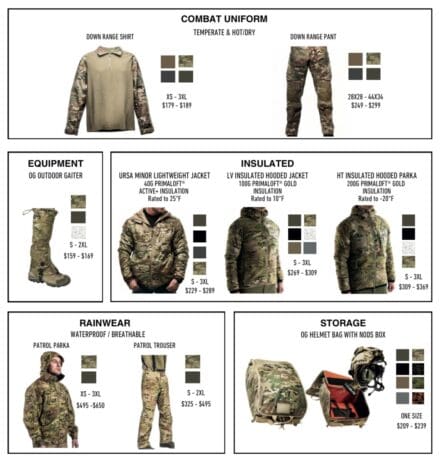


Leave a Reply